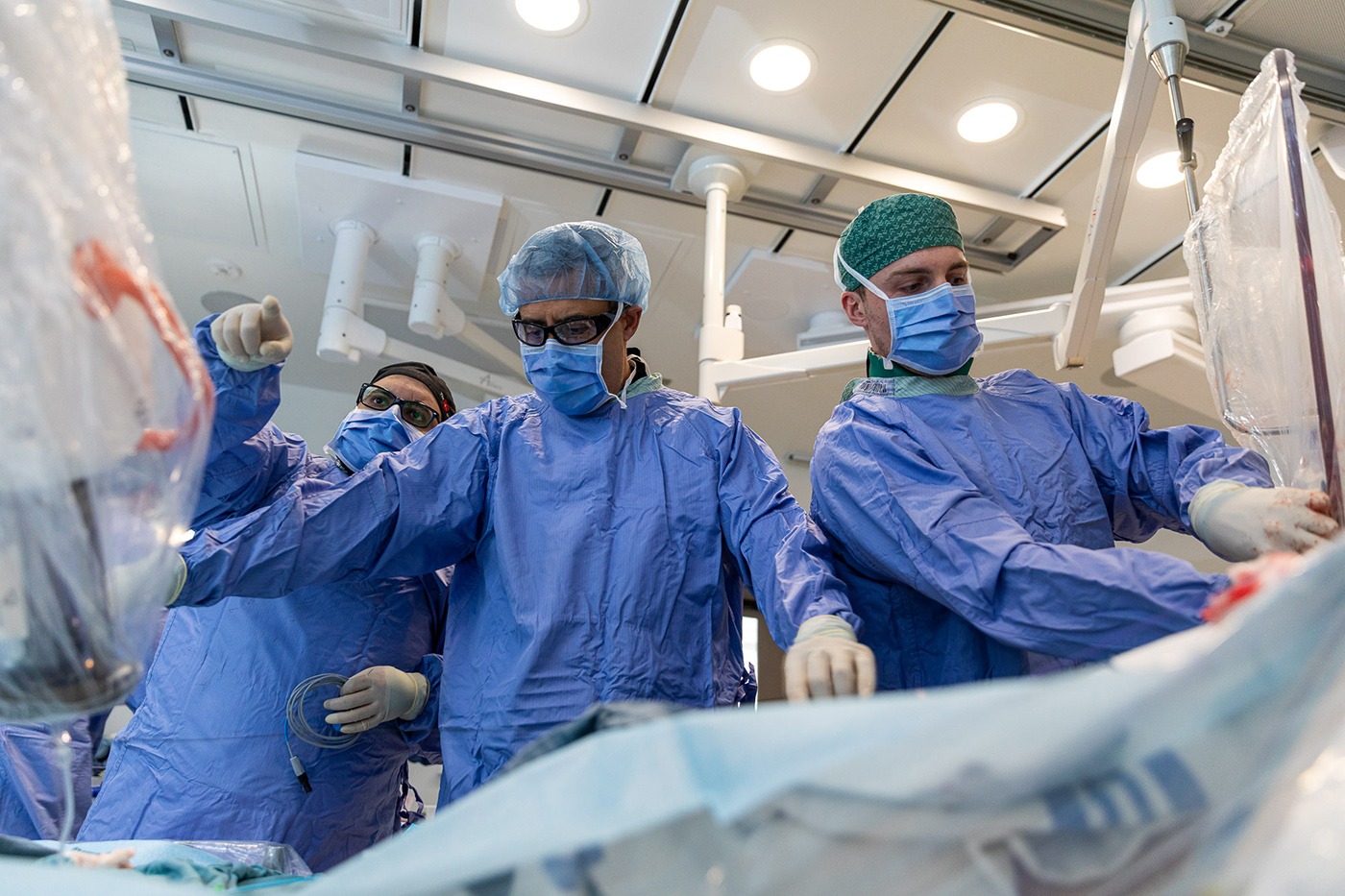
St. Michael’s Hospital performs 10 TAVIs in a day, paving the way for more efficient care, faster healing
The Structural Heart Program at St. Michael’s Hospital makes history
BY JADE VYFHUIS & MARLENE LEUNG
PHOTOS BY YURI MARKAROV
In the Hybrid Operating Room at St. Michael’s Hospital, lights reflect off polished instruments, staff scrub in with practiced movements, and patients wait, moments away from their heart procedures. A landmark day begins.
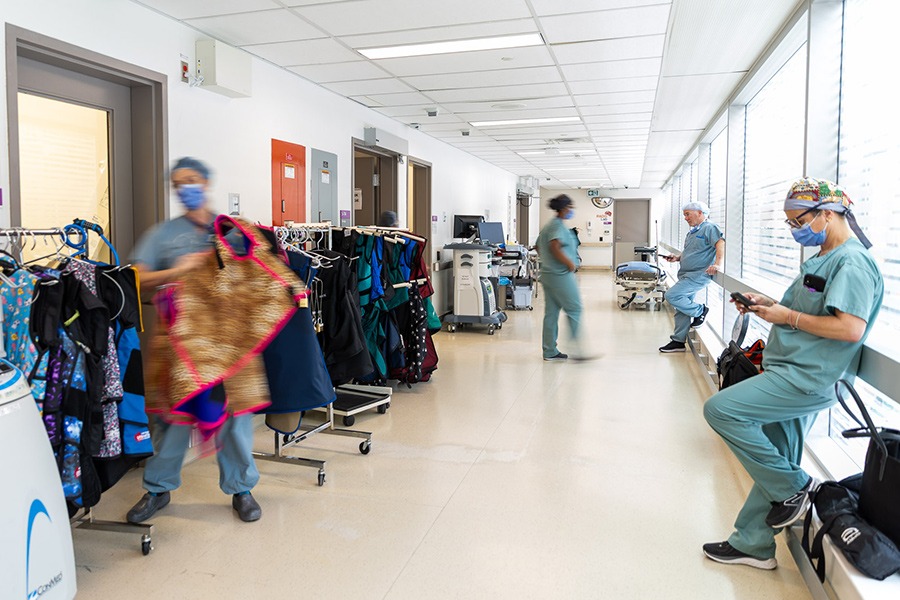
In just eight hours, the Structural Heart team will have changed the way Transcatheter Aortic Valve Implantation (TAVI) is done in Toronto. TAVI is a minimally-invasive procedure that replaces a narrowed or leaking aortic valve. While high-quality TAVI procedures are routinely done at St. Michael’s Hospital, what the team is aiming to improve is how efficiently TAVI is performed, how resources are used, and how the hospital operates as a whole.
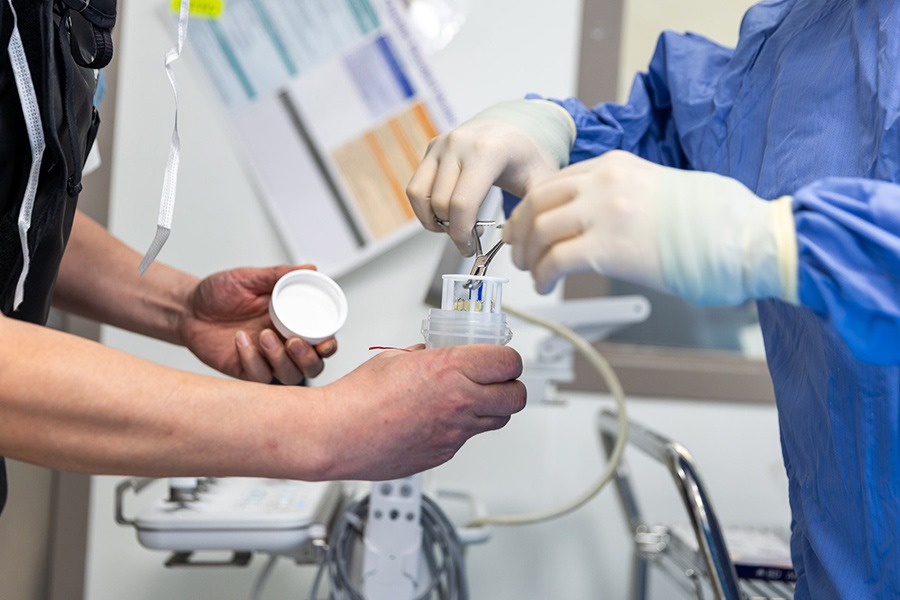
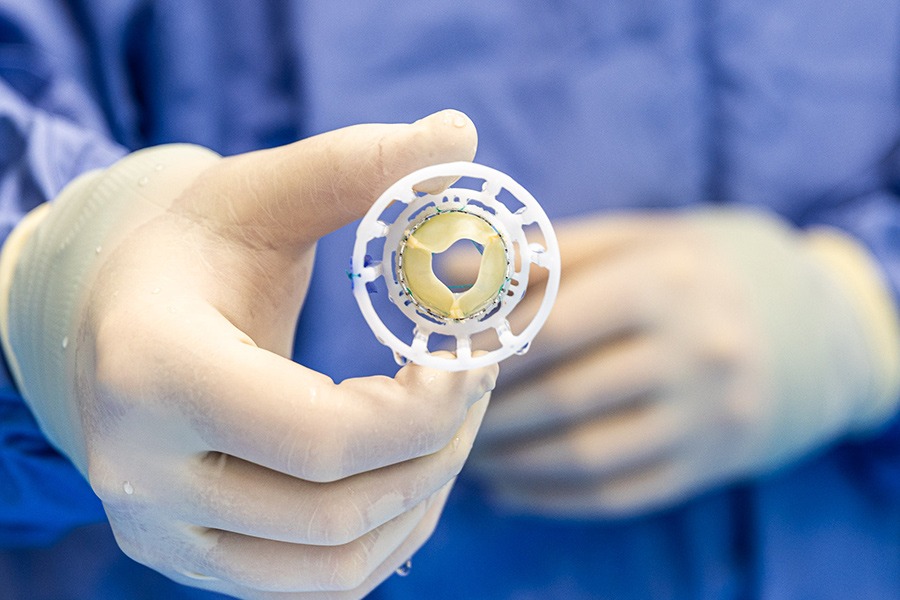
Valve used for the TAVI procedure before implantation.
In recent years, the demand for catheter-based procedures has surged, and the patient population for TAVI has grown rapidly. This need has driven the adoption of a new, more efficient workflow at St. Michael’s Hospital, a globally-recognized leader in Heart, Lung and Vascular care.
TAVI is a less invasive way to replace a damaged aortic valve that helps to restore proper blood flow to the body. Doctors guide a new heart valve into place through a catheter, typically inserted through the leg. For patients with severe aortic stenosis, TAVI offers a safer alternative to open-heart surgery, with a faster recovery time.
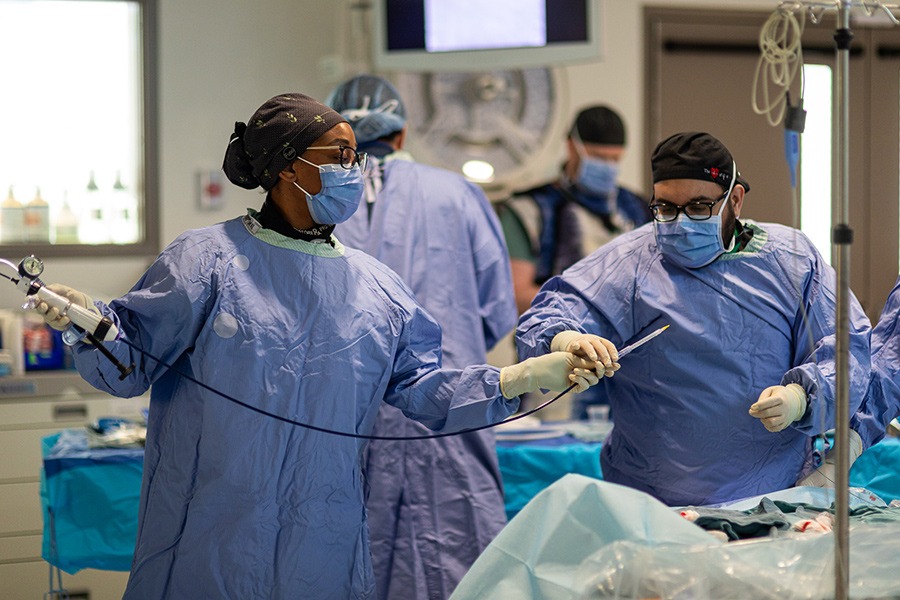
The Structural Heart Team is aiming to perform 10 TAVIs in a single day, something that has never been done before in Canada. This ambitious goal comes with significant considerations, from logistical hurdles to ensuring patient safety. Each patient’s journey has been customized to meet their individual needs for optimal recovery. Each TAVI procedure takes a specialized team, advanced imaging, and careful post-procedure monitoring. As well, the team and hospital must ensure that enough procedural rooms and recovery beds are available.
Enjoying this story? Sign up for the Unity Health Toronto newsletter, a monthly update on the latest news, stories, patient voices and research emailed directly to subscribers.
A transport nurse wheels the first TAVI patient into the prepped OR. After months of planning and preparation, every team member stands ready to play their part. The Structural Heart team wants to set a new standard of care within the Canadian healthcare system.
“The St. Michael’s Hospital Heart, Lung and Vascular program is committed to delivering high quality and efficient care, designed around the unique needs of each patient,” said Senior Clinical Director Desa Hobbs. “We are committed to advancing and evolving how we operate to increase access to world-class care. It is truly a team approach, everyone is invested in creating outstanding patient experiences while leading the way in creating more efficient models.”
The Swing
Dr. Neil Fam, Director of the Structural Heart Program at St. Michael’s Hospital, sees a future where TAVI procedures are performed more efficiently, improving patient care and reshaping medical practices. Key to this vision is the Swing Room approach – a widely used method in hospitals that use two operating rooms at the same time to make better use of resources.
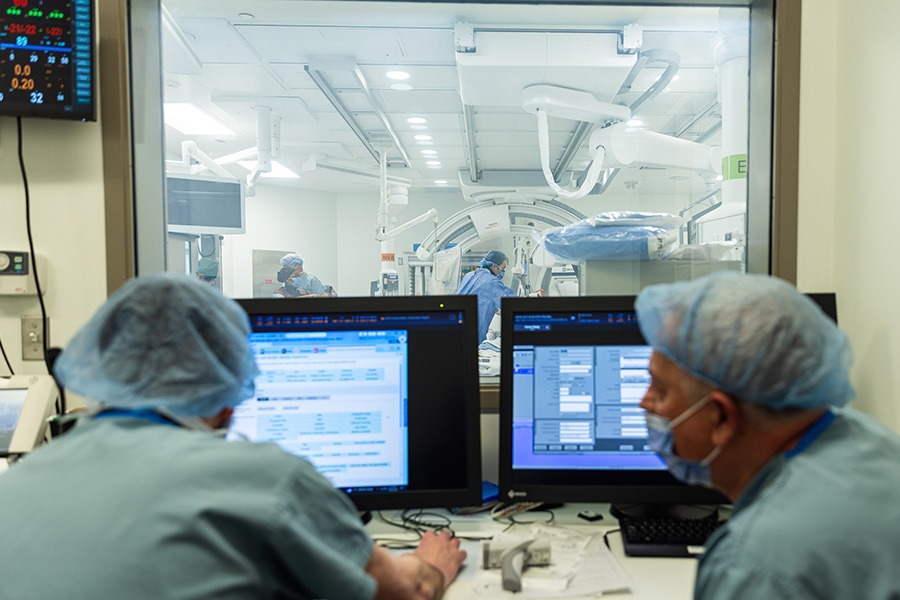
“Given our excellent outcomes with TAVI, demand for the procedure is growing,” said Fam. “We started with two a day, then four, then five, and now six a day seems to be the limit in a single room without incurring overtime. By using two adjacent rooms, we can treat more patients in a shorter time, making the most efficient use of hospital resources and reducing our waitlist at the same time.”
At St. Michael’s, implementing the Swing Room will allow more patients to receive care in a shorter amount of time. The approach uses resources in the most efficient way possible by engaging different teams in the OR and across the Heart, Lung and Vascular program – including the TAVI team, Catherization (Cath) Lab technicians, Anesthesia, Perioperative staff, and Nursing. This way, each procedure has the best staffing support possible to deliver high-quality patient care.
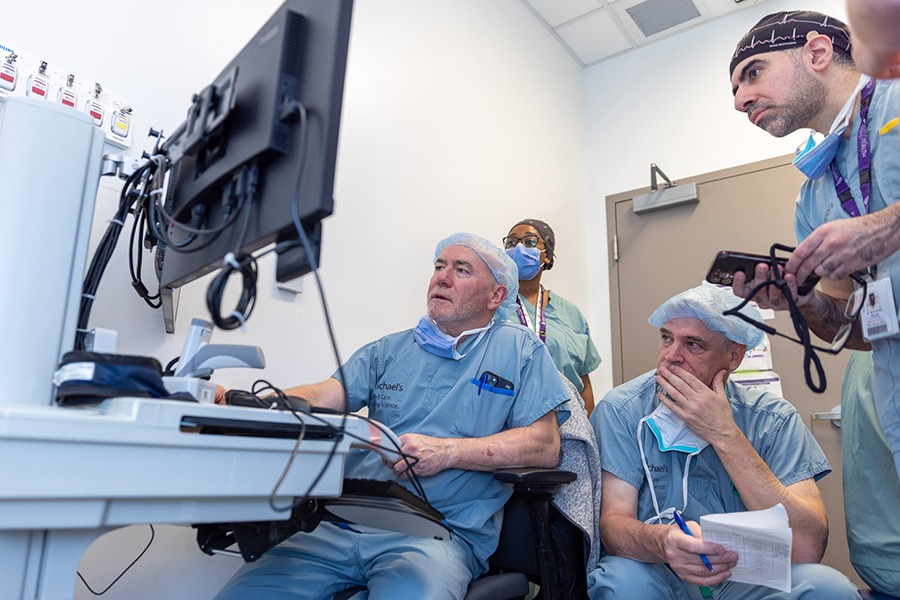
While each TAVI procedure takes about 20 minutes, another 30 minutes is needed to prepare the OR for each new patient.
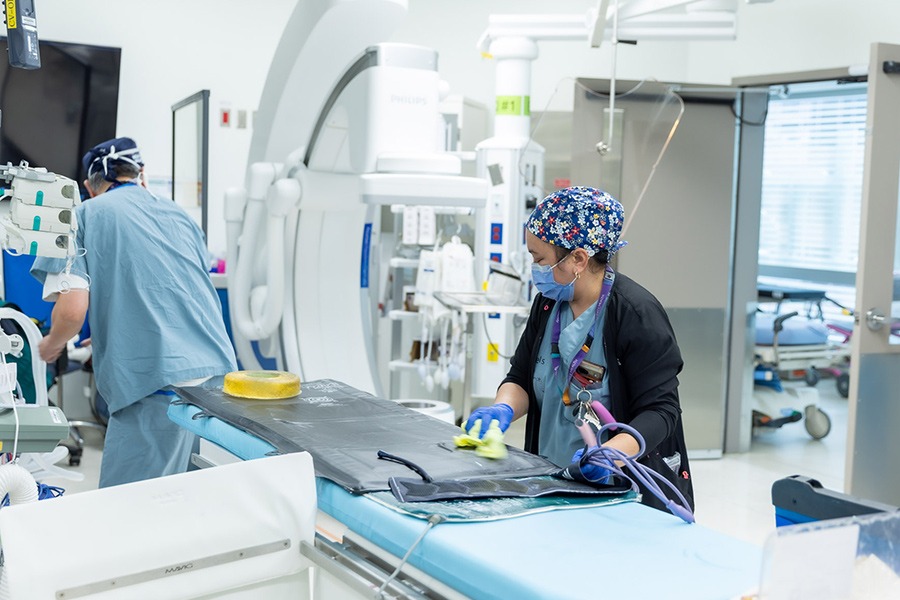
As one procedure is underway, with doctors and Cath Lab technicians focusing on the case, the perioperative team and OR staff prepare the adjacent OR for the next patient. Once the first TAVI is complete, Fam is able to scrub in again and immediately proceed to the adjacent OR to start the next TAVI without delay.
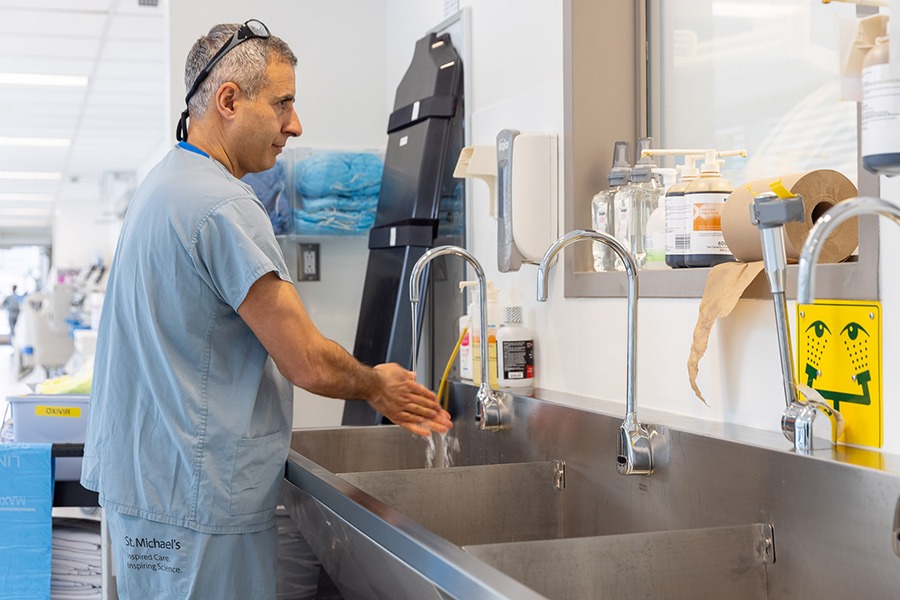
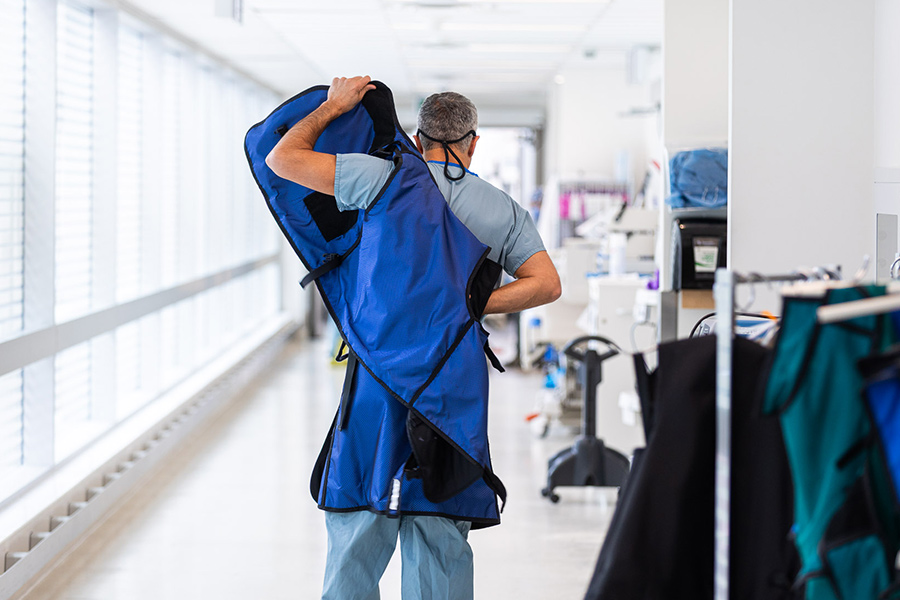
Dr. Fam scrubbing after a case and dressing in Cath Lab radiation protective gear.
This allows for a smooth transition between patients, reducing wait times and keeping the day running efficiently.
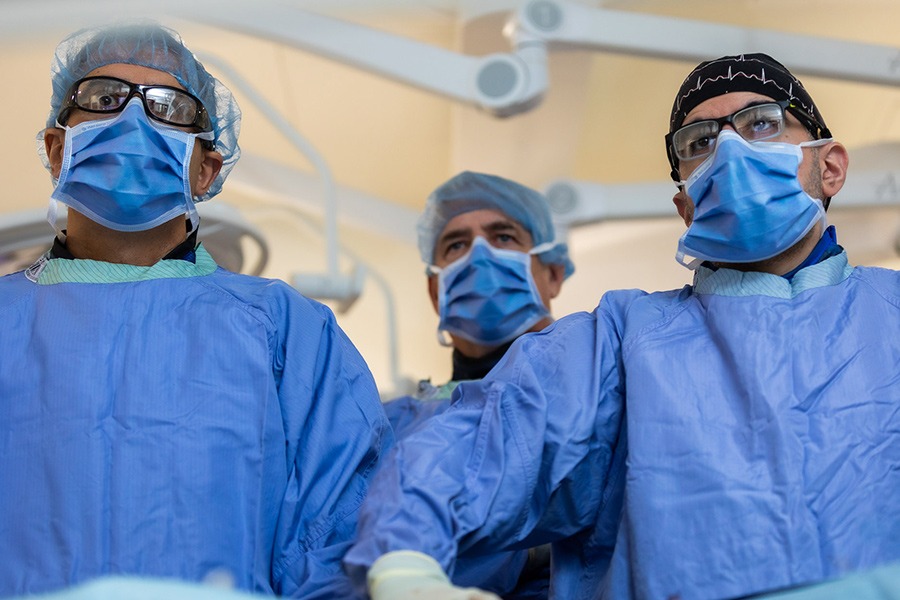
The day was the result of careful interdepartmental collaboration, planning and training, says Jordana Radke, clinical nurse educator.
“Nurses played a key role in room mockups, equipment planning, and workflow design to ensure the space could safely and efficiently support TAVI procedures. Our cardiac technicians completed extensive training on new X-ray and hemodynamic systems, bringing the technical expertise essential to the day’s success,” Radke said. “This achievement was a true team effort — every discipline contributed their expertise and dedication to ensure patients received the safe, efficient, and high-quality care that St. Michael’s is known for.”
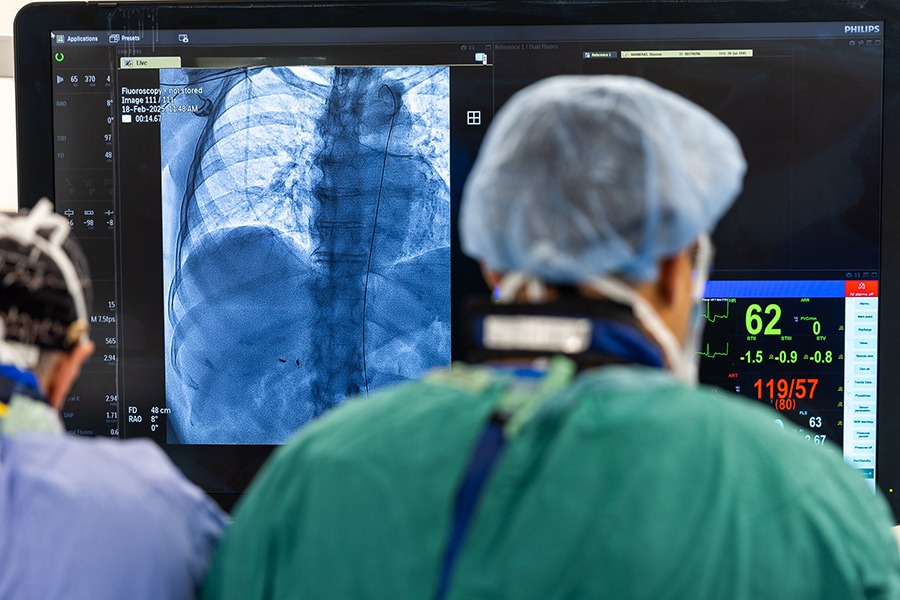
History Made
If you blink, you might miss it. As the clock inches towards 3 p.m., the Structural Heart Team gathers outside the OR doors, leaning in, trying to catch a glimpse of history in the making.
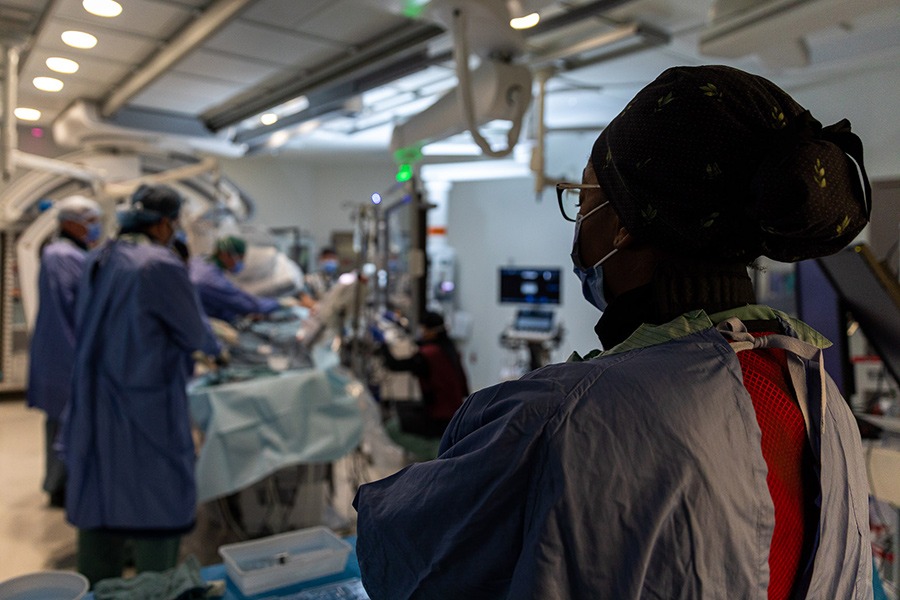
Yuri Markarov, Unity Health’s corporate photographer, scans the hallway for a clock to capture the exact moment of this milestone. In the OR, the catheter glides into position, the replacement valve poised for its final destination.
Then, in an instant the valve unfurls like a blooming flower, expanding within the aorta. A heartbeat later, it locks into place, restoring the rhythm of life.
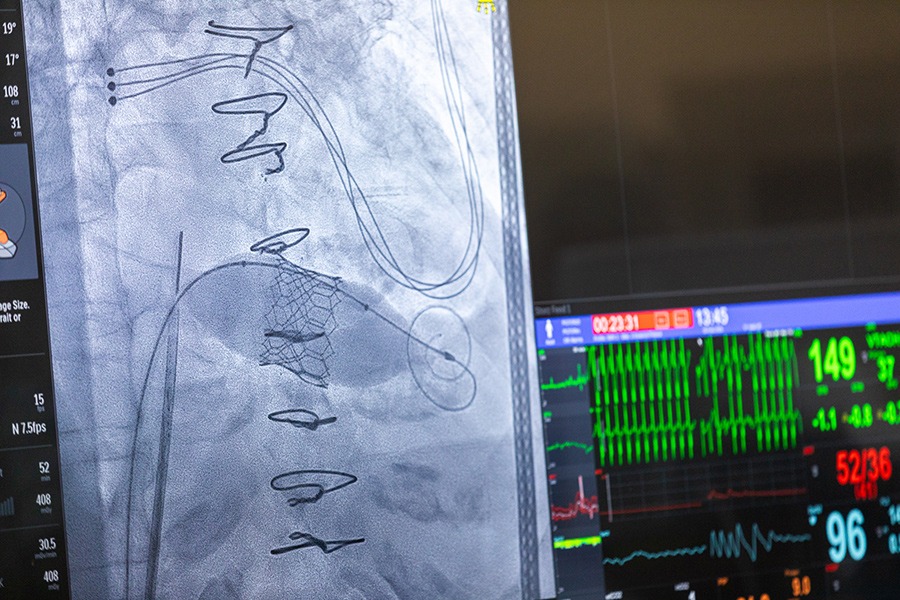
To the Future
“We could’ve done 12,” a team member says after completing the final TAVI of the day. It’s a statement that speaks volumes – not just about what was accomplished, but about what’s possible.
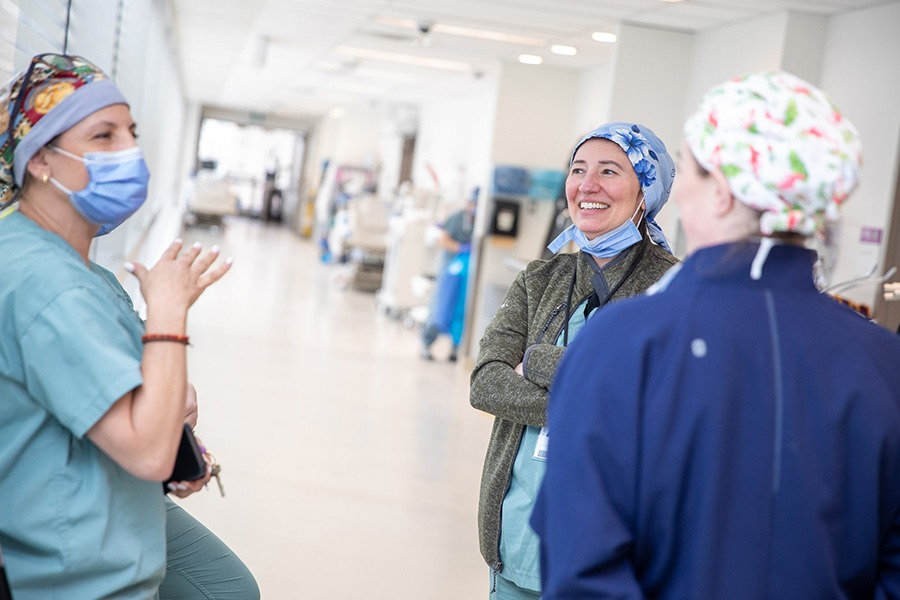
Like athletes striving for their next personal best, this team is always looking ahead, pushing boundaries, and finding ways to do more for their patients.
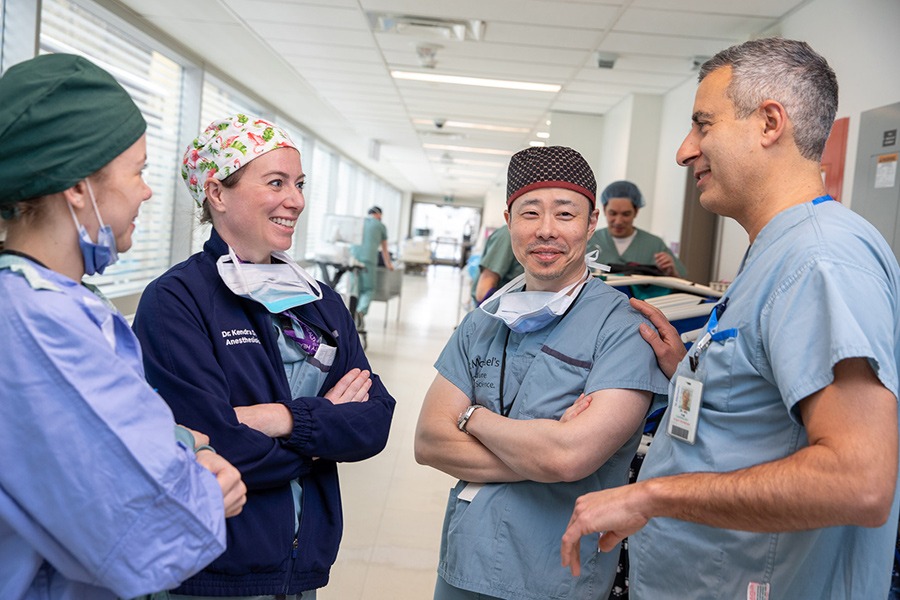
After completing 10 TAVI procedures in a day, the goal is to make this a regular practice at St. Michael’s Hospital, offering it once a month. This approach means faster recoveries, shorter hospital stays, and better care for patients.
“This was a landmark day for St. Michael’s Structural Heart Program –10 TAVIs by 3 p.m., three patients went home the same day, with excellent outcomes,” said Fam. “This is only possible with a great team that is passionate about the work they do every day. Our team never stops looking for innovative ways to deliver care to our patients-the best is yet to come!”
This was possible with the support of donors Walter and Maria Schroeder and the Schroeder Family Foundation, Joe Vitale, Aldo di Felice, Canadian Italian Business Professionals Association, Ruggiero Family Foundation, St. Michael’s Foundation’s President’s Council, and so many others.
